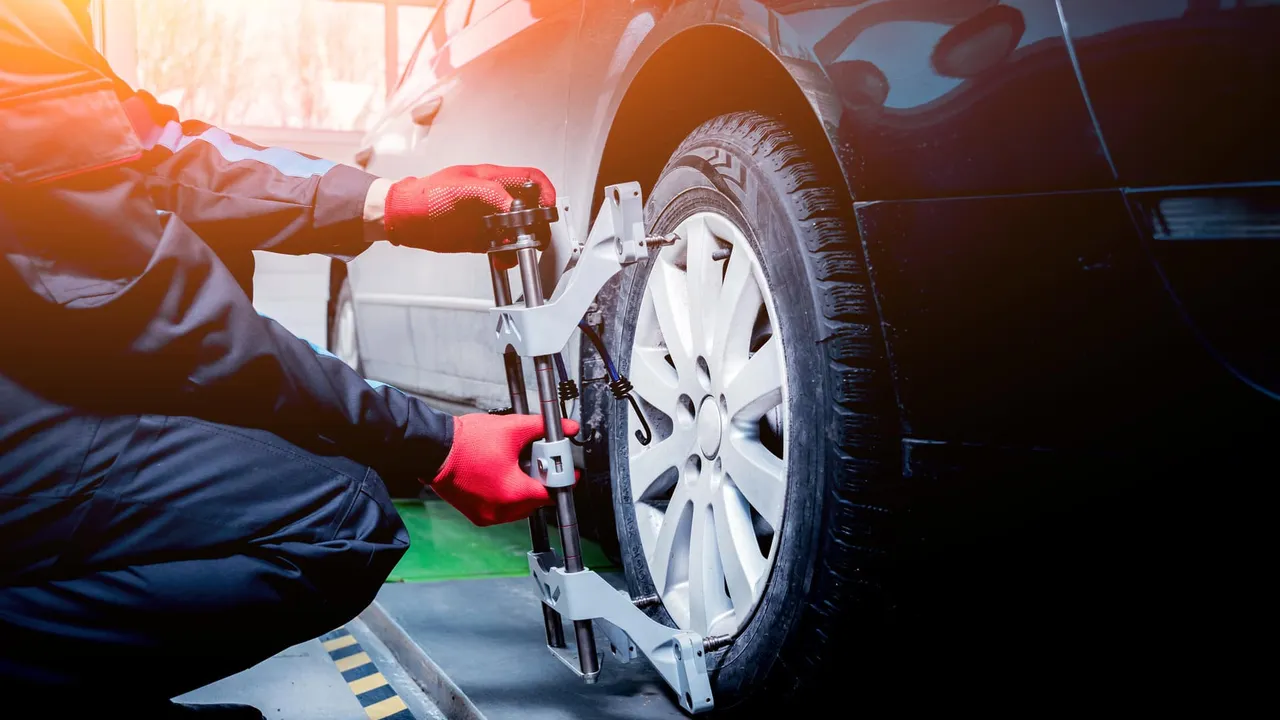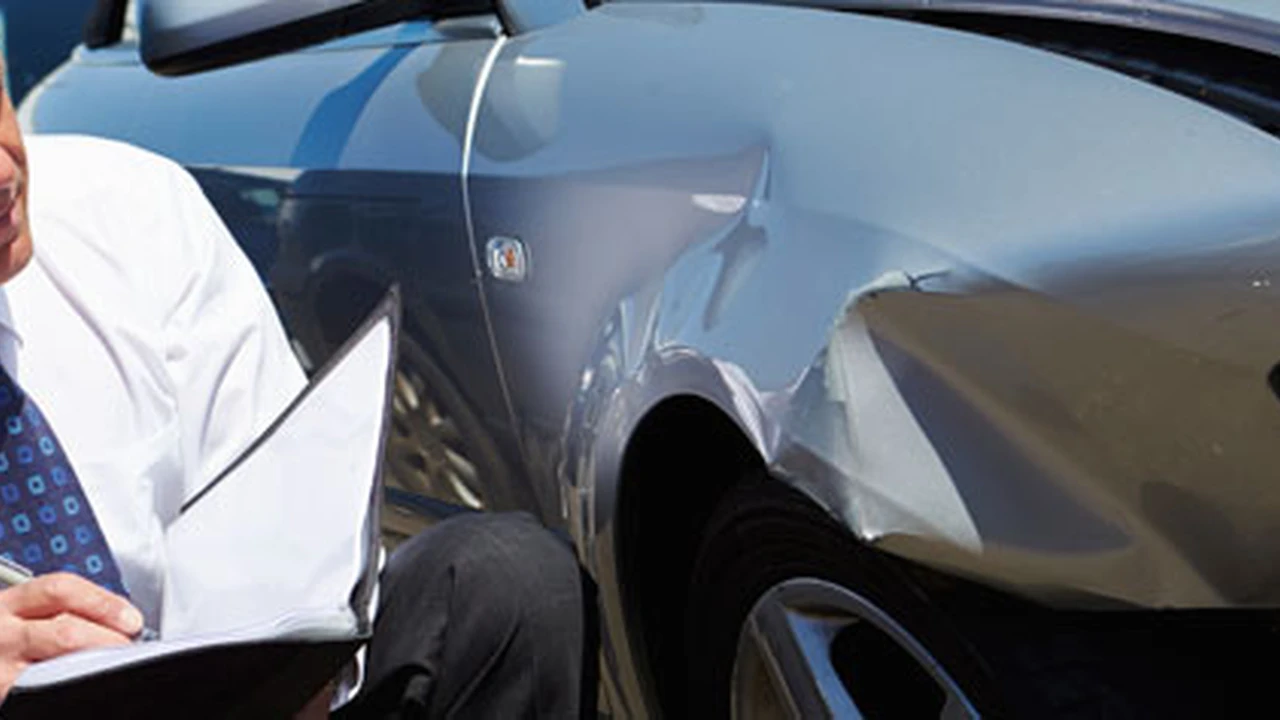Negotiating with the Insurance Company: Tips and Strategies

Understanding the Car Insurance Claim Process A Step-by-Step Guide
Okay, so you've been in an accident. It's stressful enough without having to wrangle with insurance companies. The car's dented, your neck's a little stiff, and now you're facing a mountain of paperwork and phone calls. Let's break down the car insurance claim process to make it a little less daunting. First, and this is crucial, report the accident immediately to your insurance company. Even if you think it's minor, report it. Failing to do so can complicate things later. They'll give you a claim number, which you'll need for everything. Next, document everything! Take pictures of the damage to all vehicles involved, the accident scene, and any visible injuries. Gather contact information from all parties involved, including witnesses. The more documentation you have, the stronger your case will be. Then, you'll need to fill out a claim form. Be honest and accurate. Don't exaggerate, but don't downplay anything either. Stick to the facts. Once you've submitted the form, the insurance company will assign an adjuster to your case. This person is responsible for investigating the accident and determining the extent of the damage and liability. They'll likely want to talk to you, the other driver, and any witnesses. They might also inspect the damage to your car. Finally, after the investigation, the insurance company will make a settlement offer. This is where the negotiation comes in. Don't just accept the first offer! It's almost always lower than what you're actually entitled to. That's where our tips and strategies come into play.
Initial Assessment of Your Car Insurance Claim Value Understanding Your Rights
Before you even think about negotiating, you need to know what your claim is actually worth. This isn't just about the cost of repairing your car. It's about everything you've lost as a result of the accident. This includes medical bills (present and future), lost wages (if you had to take time off work), pain and suffering, and any other expenses you've incurred. Start by gathering all your documentation: medical bills, pay stubs, repair estimates, car rental receipts, everything. Get multiple repair estimates from reputable body shops. Don't just go with the cheapest one. Consider the quality of the work and the shop's reputation. Also, understand your insurance policy. Know what your coverage limits are and what your deductible is. This will give you a baseline for what you can expect to receive. And remember, you have rights! Insurance companies have a duty to act in good faith. They can't lowball you, delay your claim unreasonably, or deny your claim without a valid reason. If you feel like they're not treating you fairly, document everything and consider talking to a lawyer.
Effective Communication Strategies with the Insurance Adjuster Negotiating from a Position of Strength
Communication is key when dealing with an insurance adjuster. Be polite but firm. Remember, they're just doing their job, but they're also representing the insurance company's interests, which may not align with yours. Always communicate in writing, preferably via email, so you have a record of everything that was said. Keep your communication clear, concise, and factual. Don't get emotional or argumentative. Focus on the facts of the accident and the damages you've incurred. When the adjuster makes an offer, don't be afraid to counteroffer. Explain why you believe your claim is worth more. Provide supporting documentation to back up your claims. Be prepared to negotiate multiple times. The adjuster will likely come back with a lower offer, and you'll need to continue to negotiate until you reach a fair settlement. And most importantly, know when to walk away. If you feel like the insurance company is being unreasonable or acting in bad faith, don't be afraid to consult with a lawyer. A lawyer can help you understand your rights and negotiate on your behalf.
Leveraging Evidence and Documentation for a Successful Car Insurance Claim Negotiation
We've hammered this point, but it's worth repeating: documentation is your best friend. The more evidence you have to support your claim, the stronger your negotiating position will be. This includes the police report, photos of the accident scene, witness statements, medical records, repair estimates, and any other relevant documents. Make sure your documentation is organized and easy to understand. Present it to the adjuster in a clear and concise manner. If you have expert opinions, such as a doctor's assessment of your injuries or a mechanic's assessment of the damage to your car, include those as well. Don't underestimate the power of a well-documented claim. It can make the difference between a fair settlement and a lowball offer.
Understanding Diminished Value Claims Negotiating for Loss of Vehicle Value
Here's something many people don't know about: diminished value. Even if your car is repaired to its pre-accident condition, it's still worth less than it was before the accident. This is because the accident history will be reported to car history databases like Carfax, and potential buyers will be less willing to pay top dollar for a car that's been in an accident. You may be entitled to compensation for this diminished value. To make a diminished value claim, you'll need to get an appraisal from a qualified appraiser who can assess the loss of value to your car. You'll then need to present this appraisal to the insurance company and negotiate for compensation. Diminished value claims can be tricky, so it's often helpful to have a lawyer assist you.
Dealing with Uninsured or Underinsured Motorist Claims Negotiating When the Other Driver Lacks Adequate Coverage
What happens if you're hit by an uninsured or underinsured driver? This can be a nightmare scenario, but you're not necessarily out of luck. If you have uninsured/underinsured motorist coverage on your own policy, you can make a claim against your own insurance company. This coverage protects you when the other driver doesn't have enough insurance to cover your damages. The process for making an uninsured/underinsured motorist claim is similar to making a claim against the other driver's insurance company. You'll need to document your damages and negotiate with your own insurance company. However, your insurance company may be more reluctant to pay out on an uninsured/underinsured motorist claim, as they're essentially paying out of their own pocket. Therefore, it's even more important to have strong documentation and be prepared to negotiate aggressively.
Navigating Medical Payments and Personal Injury Protection (PIP) Claims Understanding Your Coverage Options
Medical bills can quickly pile up after an accident. Fortunately, many insurance policies include medical payments (MedPay) coverage or personal injury protection (PIP) coverage. MedPay covers your medical expenses, regardless of who was at fault for the accident. PIP coverage is similar, but it may also cover lost wages and other expenses. If you have MedPay or PIP coverage, you can make a claim to cover your medical bills. This can be a valuable source of funds, especially if you don't have health insurance or if your health insurance has high deductibles. Be sure to understand the terms of your MedPay or PIP coverage, including the coverage limits and any exclusions.
Addressing Pain and Suffering Claims Quantifying Non-Economic Damages
Pain and suffering is a type of non-economic damage that compensates you for the physical and emotional distress you've experienced as a result of the accident. This can include physical pain, emotional distress, anxiety, depression, and loss of enjoyment of life. Quantifying pain and suffering can be challenging, as it's not a tangible loss like medical bills or lost wages. However, there are several factors that can be used to determine the value of your pain and suffering claim, including the severity of your injuries, the length of your recovery, and the impact the accident has had on your life. A common method for calculating pain and suffering is the multiplier method, where your economic damages (medical bills, lost wages, etc.) are multiplied by a factor of 1 to 5, depending on the severity of your injuries. Document everything related to your pain and suffering, including medical records, therapy notes, and personal journal entries. This documentation will help you build a strong case for compensation.
Settlement Negotiation Tactics and Strategies Maximizing Your Car Insurance Claim Payout
Okay, let's talk tactics. Here are some strategies to maximize your car insurance claim payout: * **Don't Accept the First Offer:** We've said it before, but it's worth repeating. The first offer is almost always a lowball offer. * **Know Your Bottom Line:** Before you start negotiating, decide what's the absolute minimum you're willing to accept. * **Be Patient:** Negotiation takes time. Don't feel pressured to settle quickly. * **Be Persistent:** Don't give up easily. Keep pushing for a fair settlement. * **Highlight the Insurance Company's Potential Liability:** If the accident was clearly the other driver's fault, remind the adjuster of the potential liability the insurance company faces if the case goes to trial. * **Emphasize Your Injuries:** If you've suffered serious injuries, make sure the adjuster is aware of the extent of your pain and suffering. * **Document Everything:** Keep detailed records of all your communication with the insurance company, as well as all your expenses related to the accident. * **Be Willing to Go to Trial:** Sometimes, the only way to get a fair settlement is to file a lawsuit and take the case to trial. This is a last resort, but it can be effective.
When to Hire a Car Accident Lawyer Seeking Legal Representation for Complex Claims
Sometimes, you just need a professional. Here are some situations where it's a good idea to hire a car accident lawyer: * **You've suffered serious injuries:** If you've suffered serious injuries, you'll need to focus on your recovery. A lawyer can handle the legal aspects of your claim. * **The insurance company is denying your claim:** If the insurance company is denying your claim, a lawyer can help you appeal the decision or file a lawsuit. * **The accident was complex:** If the accident involved multiple vehicles, uninsured drivers, or other complicated factors, a lawyer can help you navigate the legal complexities. * **You're not comfortable negotiating with the insurance company:** If you're not comfortable negotiating with the insurance company, a lawyer can negotiate on your behalf. * **You think you're not being treated fairly:** If you feel like the insurance company is not treating you fairly, a lawyer can help you protect your rights.
Understanding Policy Limits and Coverage Types Maximizing Your Available Benefits
Knowing your policy inside and out is crucial. Review your declaration page carefully. Understand your liability limits (the amount your insurance company will pay out if you're at fault), your collision coverage (covers damage to your car, regardless of fault), your comprehensive coverage (covers damage to your car from things like theft, vandalism, or natural disasters), and your uninsured/underinsured motorist coverage (as discussed above). Knowing your coverage types and limits will help you maximize your available benefits.
The Role of Mediation and Arbitration in Car Insurance Disputes Exploring Alternative Dispute Resolution Options
If you can't reach a settlement with the insurance company, you may be able to resolve your dispute through mediation or arbitration. Mediation is a process where a neutral third party helps you and the insurance company reach a settlement. Arbitration is a process where a neutral third party hears both sides of the case and makes a binding decision. Mediation and arbitration are often less expensive and time-consuming than going to trial. They can also be a good way to preserve your relationship with the insurance company.
Common Car Insurance Claim Negotiation Mistakes Avoiding Pitfalls and Protecting Your Interests
Here are some common mistakes to avoid when negotiating a car insurance claim: * **Talking to the insurance company without consulting a lawyer:** Anything you say to the insurance company can be used against you. * **Signing a release without reading it carefully:** Make sure you understand what you're signing before you sign it. * **Accepting a settlement offer that's too low:** Don't be afraid to reject an offer that you don't think is fair. * **Failing to document your damages:** Keep detailed records of all your expenses related to the accident. * **Missing deadlines:** Be aware of any deadlines for filing claims or lawsuits.
Documenting the Accident Scene and Gathering Evidence Essential Steps for a Strong Claim
Let's reiterate! The accident scene is a goldmine of evidence. Take pictures of everything: the damage to the vehicles, the position of the vehicles, any skid marks, traffic signals, and any other relevant details. Get contact information from all witnesses. If possible, get a copy of the police report. The more evidence you gather at the scene, the stronger your claim will be.
Understanding Depreciation and Actual Cash Value Negotiating for Fair Compensation
Insurance companies often try to pay out the "actual cash value" (ACV) of your car, which takes into account depreciation. Depreciation is the decrease in value of your car over time due to wear and tear. You may be able to negotiate for a higher payout if you can show that your car was in excellent condition before the accident or if you can find comparable vehicles that are selling for more than the ACV. Research the value of your car using resources like Kelley Blue Book and Edmunds.com.
Recommended Products for Car Accident Documentation and Safety Enhancements
Okay, let's talk about some products that can help you before, during, and after an accident:
Dash Cams: Your Silent Witness
A dash cam records video footage of everything that happens in front of your car. This can be invaluable evidence in the event of an accident. It can prove who was at fault, capture reckless driving behavior, and even deter fraud.
- Vantrue N4 3 Channel Dash Cam: This is a top-of-the-line dash cam that records in 4K resolution and has three channels, capturing footage from the front, rear, and inside the car. It also has night vision and parking mode. Use Case: Ideal for Uber/Lyft drivers or anyone who wants comprehensive coverage. Price: Around $300.
- Garmin Dash Cam Mini 2: A small and discreet dash cam that records in 1080p resolution. It's easy to install and use, and it has voice control. Use Case: Great for everyday drivers who want a simple and reliable dash cam. Price: Around $130.
- Rexing V1 Basic Dash Cam: A budget-friendly dash cam that records in 1080p resolution. It's a good option for those who want a basic dash cam without breaking the bank. Use Case: Best for drivers on a tight budget who still want the benefits of a dash cam. Price: Around $50.
Car Jump Starters: Be Prepared for Battery Issues
A portable car jump starter can save you from being stranded with a dead battery. They're small, lightweight, and easy to use.
- NOCO Boost Plus GB40 1000 Amp 12-Volt UltraSafe Lithium Jump Starter Box: A powerful and reliable jump starter that can jump start most cars and trucks. It also has a built-in LED flashlight and a USB port for charging devices. Use Case: Essential for anyone who lives in a cold climate or who has an older car with a less reliable battery. Price: Around $100.
- Audew 2000A Peak Car Jump Starter: A more affordable option that still packs plenty of power. It can jump start most cars and trucks up to 7.0L gas or 5.5L diesel engines. Use Case: A good all-around jump starter for most drivers. Price: Around $70.
First Aid Kits: Be Prepared for Minor Injuries
A well-stocked first aid kit is essential for any car. It should contain bandages, antiseptic wipes, pain relievers, and other basic supplies.
- First Aid Only All-Purpose First Aid Kit: A comprehensive first aid kit that contains everything you need to treat minor injuries. Use Case: Ideal for families or anyone who wants to be prepared for a wide range of injuries. Price: Around $20.
- Johnson & Johnson All-Purpose Portable Compact First Aid Kit: A smaller and more portable first aid kit that's perfect for keeping in your glove compartment. Use Case: Great for everyday drivers who want a basic first aid kit. Price: Around $10.
Tire Pressure Gauges: Maintain Optimal Tire Performance
Maintaining proper tire pressure improves fuel efficiency, extends tire life, and enhances safety. A good tire pressure gauge is a worthwhile investment.
- Accutire MS-4021B Digital Tire Pressure Gauge: Provides accurate readings and is easy to use. It's a reliable choice for regular tire maintenance. Use Case: Ideal for all drivers who want to ensure their tires are properly inflated. Price: Around $15.
- Longacre 52000 Tire Pressure Gauge: A high-precision analog gauge, popular among racing enthusiasts for its accuracy and durability. Use Case: Suitable for those who require precise measurements, such as car enthusiasts or racers. Price: Around $50.
Car Seat Covers: Protection and Comfort
Car seat covers can protect your seats from spills, stains, and wear and tear. They can also add a touch of style and comfort to your car.
- FH Group PU Leather Car Seat Covers: These covers are made from durable PU leather and are easy to clean. They come in a variety of colors to match your car's interior. Use Case: Perfect for families with kids or anyone who wants to protect their seats from spills and stains. Price: Around $60.
- BDK PolyPro Car Seat Covers Full Set: These covers are made from a breathable polypro material and are designed for comfort. They're also easy to install. Use Case: Great for everyday drivers who want comfortable and affordable seat covers. Price: Around $30.
Product Comparison Table:
| Product | Features | Use Case | Price (Approx.) |
|---|---|---|---|
| Vantrue N4 Dash Cam | 4K, 3 Channel, Night Vision | Uber/Lyft, Comprehensive Coverage | $300 |
| Garmin Dash Cam Mini 2 | 1080p, Discreet, Voice Control | Everyday Driving, Simplicity | $130 |
| NOCO Boost Plus GB40 | 1000 Amp Jump Starter | Cold Climates, Older Cars | $100 |
| Accutire MS-4021B Digital Tire Pressure Gauge | Digital display, Accurate readings | Regular tire maintenance | $15 |
| FH Group PU Leather Seat Covers | Durable, Easy to Clean | Families, Spill Protection | $60 |
:max_bytes(150000):strip_icc()/277019-baked-pork-chops-with-cream-of-mushroom-soup-DDMFS-beauty-4x3-BG-7505-5762b731cf30447d9cbbbbbf387beafa.jpg)






